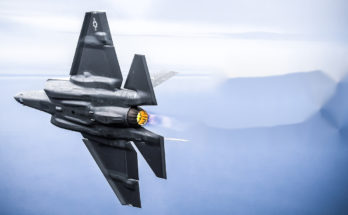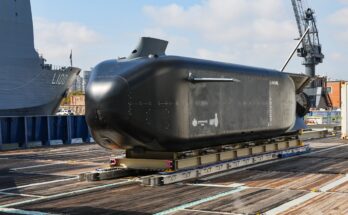The U.S. State Department has approved a Philippines government-to-government Foreign Military Sales (FMS) request for F-16 Block 70/72 combat aircraft, with notification of the proposal delivered to Congress on June 24. The request covers 10 F-16Cs and two F-16D two-seaters, plus associated engines, subsystems and armaments. Along with the F-16 request, two other FMS proposals – one for AGM-84L-1 Harpoon Block II missiles at $120 million and another for AIM-9X Sidewinder Block II missiles at $42 million – were also granted approval.
The F-16 proposal and its approval indicates an effort by Washington to continue supporting an ongoing Philippines armed forces process at a time when the U.S.-Philippines relationship has come under strain.
Philippine President Rodrigo Duterte has made it clear since he assumed office in June 2016 that the country’s strategic orientation toward the U.S. and largely contravening China would no longer remain the norm.
Unlike his predecessor Benigno Aquino, the populist Duterte has taken steps to move away from the traditional security blanket provided by the U.S. and worked to improve relations with Beijing – despite the long-standing territorial disputes between the two nations in the South China Sea. In doing so, he has played into China’s hands by removing Manila from being firmly in the U.S. corner toward a position as a more neutral regional actor.
In an eye-opening move announced in February 2020, Duterte terminated the Visiting Forces Agreement – the framework outlining the deployment of U.S. forces on Philippines soil – with Washington. This step was then paused in June 2020 when the Philippines notified the U.S. embassy in Manila that it had “frozen” the decision. Another extension to this pause was then announced on June 14, this time noting the freeze would remain in effect for six months in order for Duterte to press his concerns over the agreement with Washington.
The more obvious reason for the second pause, however, was an increased Chinese Maritime Militia presence in the disputed Whitsun Reef.
The Philippines government has little power with which to counter China’s spreading maritime presence in its backyard and alter the facts on the sea. Making matters worse, Duterte has essentially undermined the U.S.-Philippines Enhanced Defense Cooperation Agreement (EDCA) and hindered Washington’s (and Manila’s) response to Chinese forays into contested Philippines-claimed waters and shoals in the process.
The firebrand president appears to be slowly learning that his efforts to warm relations with Beijing have done little to alter China’s efforts to turn the South China Sea into its own territorial lake. Instead, there is a subtle shift back toward the U.S. camp and increased signs that Duterte recognizes the mutual benefits of Manila’s strategic alignment with Washington.
More importantly, there is a heightened urgency to follow through on ongoing Armed Forces of the Philippines (AFP) modernization goals.
One of these goals is for the Philippine Air Force (PAF) to field sufficient capability to maintain security over the country’s northern reaches and exclusive economic zone (EEZ).
To help achieve this, the PAF wants to acquire and bring into service a host of new materiel, ranging from additional South Korean-made FA-50PH light fighter aircraft, airlifters, and long-range patrol aircraft to early warning and control (EW&C) aircraft, electronic countermeasures aircraft, an aerial refueling aircraft, and over-the-horizon radars for air defense surveillance purposes.
But central to the PAF’s mid-term modernization program, titled “Flight Plan 2028,” is its multirole fighter (MRF) project involving acquisition of a dedicated higher-end combat aircraft platform – above the lower-end FA-50 already in service.
The PAF has monitored the fighter market for a potential MRF solution since issuing a Request for Information (RFI) in mid-2017, evaluating both the Saab JAS 39 Gripen and the American-made Lockheed Martin F‑16(V). Statements by the PAF and Defense Secretary Delfin Lorenzana from as far back as October 2018 through today have indicated a preference for the former.
Whether the Philippines ultimately opts for the F-16 – and the FMS proposal moves forward to a firm contract – remains to be seen.
State Dept. announces a big one, approves selling Philippines 12 F-16s for $2.43 billion, along w/ Sidewinder and Harpoon missiles. (Manilla weighing between 15 and Saab Gripen fighter…)
— Paul McLeary (@paulmcleary) June 24, 2021
But the FMS proposal signals that the Duterte government is intent on adding higher-end capability to the AFP’s limited arsenal. And Washington – eager to stay on Duterte’s good side through the end of his term in May 2022 – is happy to oblige.

Dan Darling is Forecast International’s director of military and defense markets. In this role, Dan oversees a team of analysts tasked with covering everything from budgeting to weapons systems to defense electronics and military aerospace. Additionally, for over 17 years Dan has, at various times, authored the International Military Markets reports for Europe, Eurasia, the Middle East and the Asia-Pacific region.
Dan's work has been cited in Defense News, Real Clear Defense, Asian Military Review, Al Jazeera, and Financial Express, among others, and he has also contributed commentary to The Diplomat, The National Interest and World Politics Review. He has been quoted in Arabian Business, the Financial Times, Flight International, The New York Times, Bloomberg and National Defense Magazine.
In addition, Dan has made guest appearances on the online radio show Midrats and on The Media Line, as well as The Red Line Podcast, plus media appearances on France 24 and World Is One News (WION).




